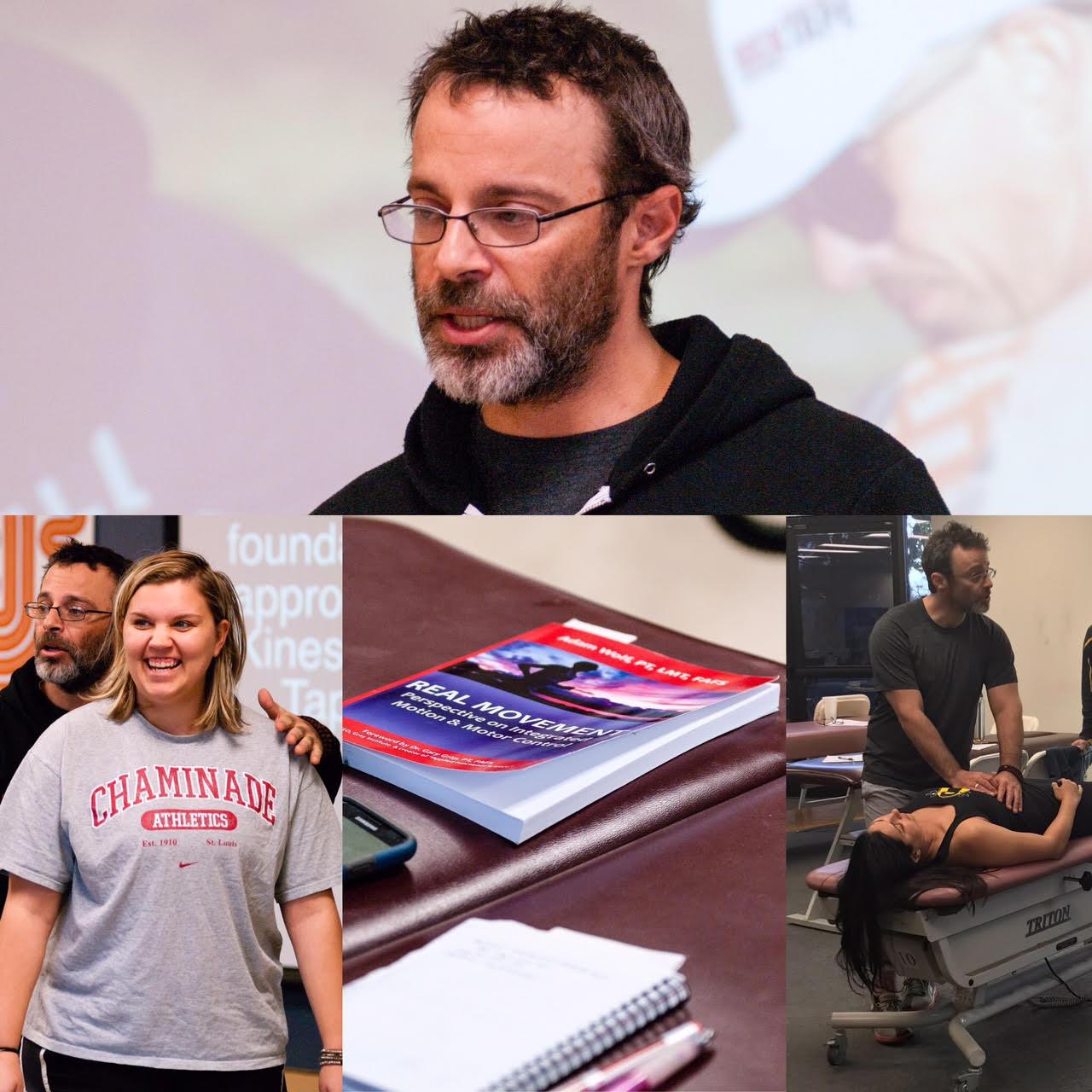 Sell tickets and manage registrations
Sell tickets and manage registrations
 View my tickets and registrations
View my tickets and registrations
 Sell more tickets through digital marketing
Sell more tickets through digital marketing
 Add an event calendar to your website
Add an event calendar to your website
 Find events by location and categories
Find events by location and categories
REAL Movement: 2 Day Course; New York

Course Description: REAL Movement: Perspective on Integrated Motion & Motor Control 2 Day
This two-day interactive workshop explores integrated movement & motor control principles. Through the lens of integrated movement, principle based assessments, in addition to, relational testing between muscles and fascial lines will be applicable. Moveover, applications of manual therapy techniques designed to improve overall function and return to activity will be reviewed. Lastly,, strategies to load specific movements that will improve tissue mobility will be comprehensively discussed. Utilizing a principle-strategy-application process, attendees will explore assessment and design solutions for whole body influence.
In recent years, the understanding of fascia, movement and pain science has seen many developments . For course purposes, these structures and relationships of an integrated system of fascial connections will be studied, in addition to traditional concepts of regional-interdependence
The sight of pain isn’t the cause of the pain, and a limitation in one part affects the whole. It’s also recognized that pain produces inhibition, therefore, by utilizing principles of motor control theories, the correct combination of mobility and stability movements can be prescribed on an individual basis in order to effectively and efficiently correct a movement pattern.
THE BODY EXISTS IN 3D AND MUST CONTROL GRAVITY, GROUND REACTION FORCES, MASS & MOMENTUM.
Course Features:
· Assessing Fascial Highways using integrated movement for all patient populations
· Mobility issues: Manual & Self Myofascial Release techniques
· Structure specific assessments for motion, mobility & stability.
Links in the chain: Why the sight of pain isn’t always the cause
· Corrective techniques, design solutions & specific therapeutic exercises for stability limitations
· HANDS ON LAB PLUS Comprehensive Course Workbook packed with resources, illustrated demos, & references!
(Integrated Labs Included with Each Section)
Part 1: Foundations of 3D Movement (8:00-8:45)
1. Background Truths of Movement
-
Drivers
-
Motion vs. Muscle
-
Planes of Motion
-
Tensegrity
2. Motion vs Position (8:45-9:15)
a. Real vs. Relative Motion
b. Transformational Zones
Part 2: Integrated Movement Assessment
1. Naming Motion at a Joint (9:15-9:45)
a. Bone movement relative to plane
b. Top Down or Bottom Up
2. Assessing Transformational Zones (10-10:30)
a. Strategies for Assessment
i. Joint and Tissue Specific
ii. Global vs Specific
iii. Weight Bearing vs Non-Weight bearing
3. Fascial Highways (10:30-11:00)
a. Anterior Highway
b. Posterior Highway
c. Lateral Highway
d. Anterior X
e. Posterior X
4. Common combinations creating “Dysfunctional” Patterns (11-11:45)
a. Facilitated or Inhibited- Definitions
b. Strategies to assess inhibitions and facilitations
c. What do we stretch, release, strengthen and why?
Lunch. 1 hour 1145-1245
Part 3: Motor Control Theories & the relationship to integrated motion
(12:45-1:30)
1. Motor Control definition
a. Reciprocal inhibition
2. Pain produces inhibition
a. Thought process of linking inhibition to facilitation
Part 4: Body Work/Soft Tissue Work (1:30-5:00)
1. Tissue Composition
2. Tension vs Compression
a. Selection of What to release and Why utilizing motor control principles
3. Anatomical vs Integrated Anatomy 3
SOFT TISSUE AND FASCIAL APPROACH INCLUDING
Soft tissue treatment to upreguate tissue vs. down regulate tissue vs. improve facscial glide.
Concepts of tensegrity related to tissue work.
Gripping tissue utilizing principles of tensegrity
INTEGRATING SOFT TISSUE & MOVEMENT ASSESSMENT OF 5 FLEXIBILITY HIGHWAYS,
DAY 2 OF COURSE:
8:00-9:00am
Review concepts online including integrated movement
Transformational zones
Naming motion at a joint
Motor control concepts
Motor control assessment review
Reciprocal inhibition, facilitation/inhibition examples
Part 5: Joint By Joint Assessment/Treatment Approaches and Therapeutic (9:00-9:30)
Interventions
Break (9:30-9:40)
1. Knee (9:40-10:45)
a. Biomechanics of the Knee
b. Integrated Knee Assessment & Treatment Approaches utilizing Motor Control Principles
c. Movement Prescription and Therapeutic Interventions
2. Biomechanics of the Hip (10:45-12:00)
a. Integrated Hip Assessment & Treatment Approaches utilizing Motor Control Principles
b. Soft Tissue Treatment
c. Movement Prescription and Therapeutic Interventions
Lunch 12:00-1:00
Part 6. Shoulder Complex & Elbow (1:00-2:00)
a. Biomechanics of the Shoulder Complex
b. Relationship to Hip during movement. Integrated Shoulder Complex assessment & treatment approaches utilizing motor control principles
c. Soft Tissue Treatment
d. Movement Prescription and Therapeutic Interventions
Part 7. Spine (2:00-3:30)
a. Biomechanics of the LBHC
b. Integrated Lumbopelvic assessment & treatment approaches utilizing motor control principles
c. Biomechanics of the Thoracic Spine
d. Thoracic Assessment utilizing motor control principles
e. Movement Prescription and Therapeutic Interventions
f . Breathing Assessment
1. Mechanics of breath
2. 3D Breathing
3. Dysfunctional Breathing
Part 8: Conclusion & Questions (3:30-4:00)
Please wear comfortable clothing to participate fully in the interactive labs.
CLASS LIMITED TO 20 participants
OBJECTIVES:
-
Identify anterior, posterior, and lateral flexibility fascial highway function and how they relate to movement
-
Describe the principle based assessment approach for movement
-
Examine the effects of specific fascial changes such as injury, myofascial restructuring, altered movement patterns, and dysfunction
-
Understand and discuss principles of motor control and the relationship to pain and inhibition.
-
Demonstrate structure specific integrated assessment techniques to test motion, mobility & stability of the hip, lumbopelvic complex and thoracic spine
-
Correctly distinguish differences between reactive vs. traditional anatomy, relative to integrated movement
-
Successfully implement treatment strategies for each body part/segment.
HOURS:
Saturday: 8-5:00
Sunday: 8-330
Approval for 14 Contact Hours Pending

